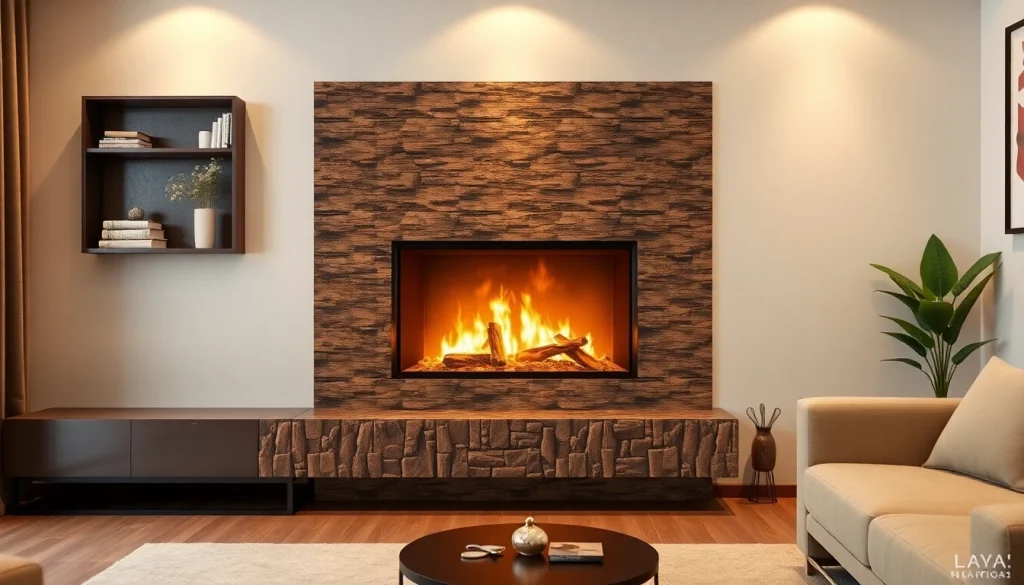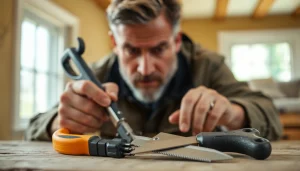Keunggulan Water Vapor Fireplace: Solusi Estetika untuk Kenyamanan Rumah

Introduction to Water Vapor Fireplaces
As modern living spaces evolve, so do our desires for home aesthetics and comfort. Among the innovative trends that have emerged is the water vapor fireplace, which combines technology and design to create a unique ambiance. Unlike traditional fireplaces, water vapor fireplaces utilize ultrasonic technology to create the illusion of flames, offering warmth without the risks associated with open fires. This article explores everything you need to know about water vapor fireplaces, including their benefits, safety and environmental impact, technology, maintenance, and tips for choosing the right one for your home.
What is a Water Vapor Fireplace?
A water vapor fireplace is an innovative electric fireplace that uses water vapor and LED lights to simulate the look of real flames. This technology operates by converting water into a fine mist, which is then illuminated by colored LED lights to create a visually stunning effect. This type of fireplace is not only aesthetically pleasing but also serves as a safe alternative for homeowners who desire a fireplace’s ambiance without its traditional drawbacks.
Key Benefits of Water Vapor Fireplaces
- Safety: Water vapor fireplaces are flame-free and operate at low temperatures, making them safe for families with children and pets.
- Eco-Friendly: These fireplaces do not produce harmful emissions or pollutants, contributing to a cleaner environment.
- Versatile Design: Water vapor fireplaces are available in various designs and sizes, making them suitable for any room or décor style.
- Low Maintenance: Unlike traditional fireplaces that require frequent cleaning and maintenance, water vapor models are simpler to care for.
When and Where to Install a Water Vapor Fireplace?
Water vapor fireplaces can be installed in various settings, from homes to commercial spaces. They are ideal for living rooms, bedrooms, and even restaurants or office spaces where ambiance is essential. The absence of a real flame allows for flexible installation options; a water vapor fireplace can be set up in spaces where traditional fireplaces might be unwelcome due to safety concerns or building regulations. Furthermore, these fireplaces can be enjoyed year-round, offering ambiance without substantial heat production.
Safety and Environmental Impact
Safety of Water Vapor Fireplaces for Families
One of the most compelling advantages of water vapor fireplaces is their safety profile. Since they do not produce actual flames, the risk of house fires is significantly reduced. Additionally, the cool-to-the-touch surfaces eliminate the risk of burns, making them an excellent choice for families with children or pets. Another safety feature is their ability to operate without chimney or venting needs, removing the risks associated with smoke inhalation and carbon monoxide buildup.
Environmental Impact of Using Water Vapor Fireplaces
Water vapor fireplaces are recognized for their minimal environmental footprint. They operate using just water and electricity, meaning they contribute no harmful emissions during use. Unlike traditional wood-burning or gas fireplaces, there’s no deforestation associated with fuel sourcing, and the high efficiency of water vapor technology ensures that the energy consumed is utilized effectively. As concerns about air quality and environmental sustainability continue to grow, water vapor fireplaces present a contemporary solution that caters to eco-conscious consumers.
Comparison with Traditional Fireplaces
When comparing water vapor fireplaces to traditional options, the most notable differences appear in safety, efficiency, and maintenance. Traditional wood-burning fireplaces produce smoke, ash, and other pollutants, whereas water vapor fireplaces offer a clean alternative. Moreover, while conventional fireplaces require extensive upkeep, including chimney cleaning and ash removal, water vapor models are virtually maintenance-free aside from occasional tank refilling and wipe-downs for dust accumulation.
How Water Vapor Fireplaces Work
Ultrasonic Technology in Water Vapor Fireplaces
At the heart of water vapor fireplaces is ultrasonic technology. This process utilizes a transducer that vibrates at high frequencies, generating fine water droplets that are ejected into the air. The resulting mist flows gently in the fireplace, where LED lights enhance the visual effect by illuminating the vapor and creating a realistic flame-like appearance. This technology not only mimics the beauty of flames but also ensures that the fireplace remains completely safe and cool to the touch.
The Process of Creating ‘Fire’ with Water
The illusion of fire achieved by water vapor fireplaces is astonishingly lifelike. When the ultrasonic transducer vibrates, it atomizes water into a mist that resembles smoke. This mist is then illuminated by strategically placed LED lights set to various colors, allowing users to customize the ambiance according to their mood or decor. Some models even feature integrated sound effects that create the sensation of a crackling fire, completing the experience.
Durability and Maintenance of Equipment
While water vapor fireplaces are designed for low maintenance, some care is still required to ensure longevity. Regularly refilling the water reservoir is essential; many models offer direct water line connections to minimize this task. The nebulizer within the firebox needs occasional cleaning to prevent mineral buildup, especially in areas with hard water, which can affect performance. Following the manufacturer’s maintenance guidelines can help extend the unit’s lifespan significantly.
Tips for Choosing the Right Water Vapor Fireplace
Factors to Consider
When selecting a water vapor fireplace, several factors should guide your decision:
- Size: Consider the space available for installation. Measure the intended location to ensure the fireplace fits appropriately without overwhelming the area.
- Style: Water vapor fireplaces come in a variety of styles, from wall-mounted units to freestanding models. Choose a design that complements your home’s aesthetic.
- Functionality: Evaluate whether you want additional features like heating capabilities, remote control operation, or self-cleaning options.
- Brand and Warranty: Opt for reputable brands that offer warranties, ensuring you receive quality products and support in case of defects.
Comparison with Other Types of Fireplaces
Water vapor fireplaces stand out when compared to other types like electric, gas, and wood-burning fireplaces. Electric fireplaces provide heat but often lack the visual appeal of water vapor technology. Gas fireplaces can replicate heat effectively but may require venting, making them unsuitable for some spaces. Wood-burning fireplaces, while traditional, involve more maintenance and pose safety risks. In contrast, water vapor models offer unmatched flexibility and aesthetic benefits.
Popular Models and Recommendations
Several models have gained popularity among consumers due to their design, functionality, and reliability. Notable examples include:
- Dimplex Opti-Myst: A frontrunner in the industry, known for its lifelike flame and smoke effect that enhanced with sound components.
- Aquafire: Utilizes innovative technology enabling a customizable flame experience, available in various sizes to fit different spaces.
- Sunlitup Electric Fireplace: Offers smart features for ease of use, including an automatic water filling system and an elegant design suitable for contemporary interiors.
Maintenance and Care of Water Vapor Fireplaces
Routine Maintenance Steps
Taking care of your water vapor fireplace ensures it operates efficiently and lasts longer. Here are some routine maintenance steps:
- Regularly check and refill the water reservoir or connect to a continuous water source if applicable.
- Clean the nebulizer and the interior of the fireplace with a damp cloth to remove dust and prevent mineral buildup.
- Inspect the LED lights to ensure they are functioning, replacing any burnt-out bulbs as needed.
Maintaining Vapor Quality and Long-Term Effectiveness
To ensure optimal vapor quality, always use distilled water in the fireplace. Tap water can introduce minerals that may clog the nebulizer. Also, avoid running the fireplace without water, as this can damage the unit. By adhering to these practices, the visual effects of the flames remain vivid and captivating over time.
Signs When Repairs are Needed
Like any home appliance, water vapor fireplaces may require repairs. Be alert for the following signs:
- Decreased vapor output or the absence of mist.
- Fluctuations in the color of the flames indicating potential LED failure.
- Strange noises or vibrations from the unit that may suggest mechanical issues.
If you notice any of these problems, consult the manufacturer or a qualified technician for repairs to avoid further damage to the unit.
Conclusion
A water vapor fireplace provides a unique, safe, and aesthetically pleasing alternative to traditional fireplaces. With various benefits, such as eco-friendliness, low maintenance, and versatility in design, these fireplaces are more than just decorative pieces; they’re a contemporary solution for modern homes. By understanding how they work, maintaining them properly, and choosing the right model, you can enjoy the ambiance of a fireplace without the risks and hassles associated with traditional heating methods.







